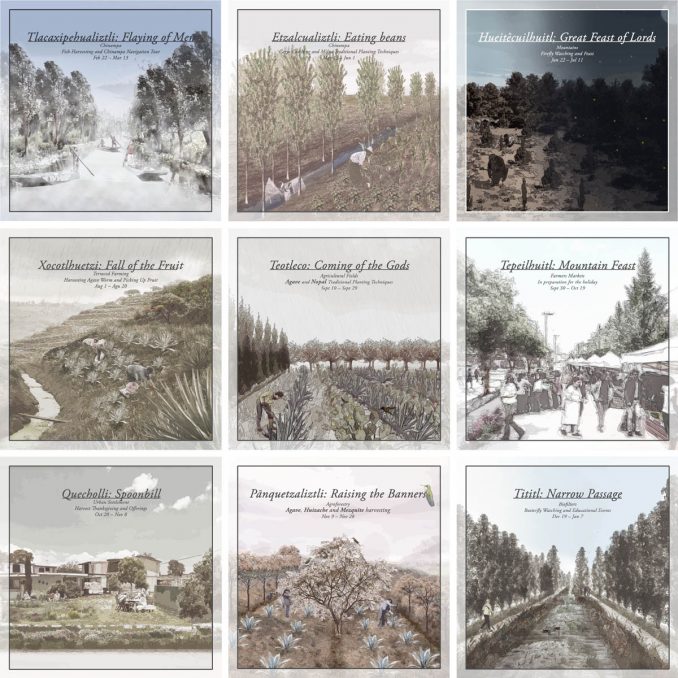
Situated in the formerly liquid territory of the San Antonio Atocha lagoon and the Lázaro Cárdenas settlement, this project intertwines people, culture, local economy, and the earth’s cycles in enriching the region’s livelihood. Focused on the continuous drought: one that is not only climatic and ecological, but also economic and cultural, we are revitalizing the landscape by embracing water and weather cycles, invest in the local communities, and support the cultural heritage of the region. Our interventions expand the existing lagoon to re-establish the formerly liquid territory of wetlands and apply traditional farming techniques to promote forms of care for the landscape. We are focused on fighting drought and enriching the territory, by investing in the local ecology, economy, and culture.
Our main values are to:
1. Preserve the cultural patrimony by embracing traditional farming techniques of
polycultures.
2. Embrace the climatic and ecological cycles.
3. Enrich the local economy by actively engaging locals and visitors. Landscape is a self-dependent living memory that breaks the continuous cycles of global dependencies and exploitations.
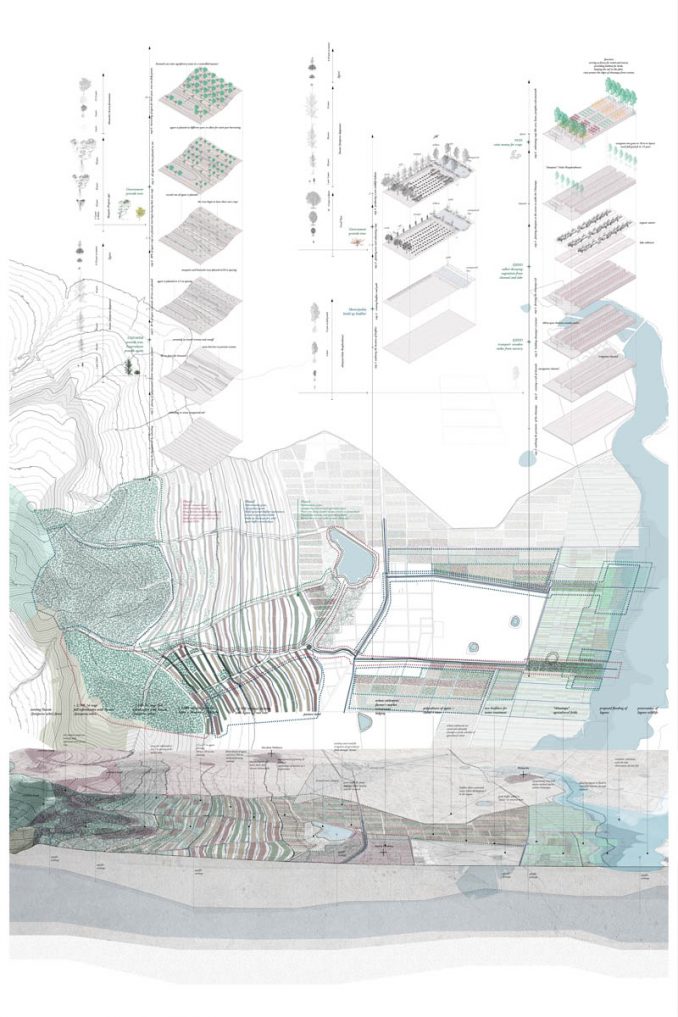
Centered on the interests of the local ejidatarios, the rightful agents of the territory, we mobilize transformation through the establishment of a settlement-based and ejido-led network of agricultural cooperatives, with the support of non-profit international organizations. Cooperatives encourage local communities to self-organize and collaborate, allowing the ejidatarios to gain back economic stability and political agency over the landscape. The cooperatives engage in a plurality of land uses, focused on the diversification of the economy and the productivity of the landscape. With the implementation of traditional farming techniques tailored to the particularities of the land, we promote local goods, while also breaking any dependencies on the currently insufficient infrastructure in place. With programs for agrotourism and ecotourism, we further support the livelihood of the community, while also encouraging locals and visitors to work together in preserving and restoring biodiversity, reinforcing cultural connections, and enriching knowledge of the land.
The primary design proposals for the territory are:
- Reforestation of the mountains with native tree species.
- Implementation of agroforestry practices to restore the productivity of the soil.
- Landform interventions in lower upland areas through terraces and ditches to expand agricultural productivity and conserve water resources.
- Modifications to the existing water infrastructure, by decommissioning existing channels and canals, designing biofilters, and creating points of aquifer recharge.
- Preservation of existing playas to collect rainwater, restore wetlands, and recharge the aquifer.
- Expansion of the lagoon, through a series of chinampas and channels that diversify the lagoon’s ecosystem and increase land productivity.
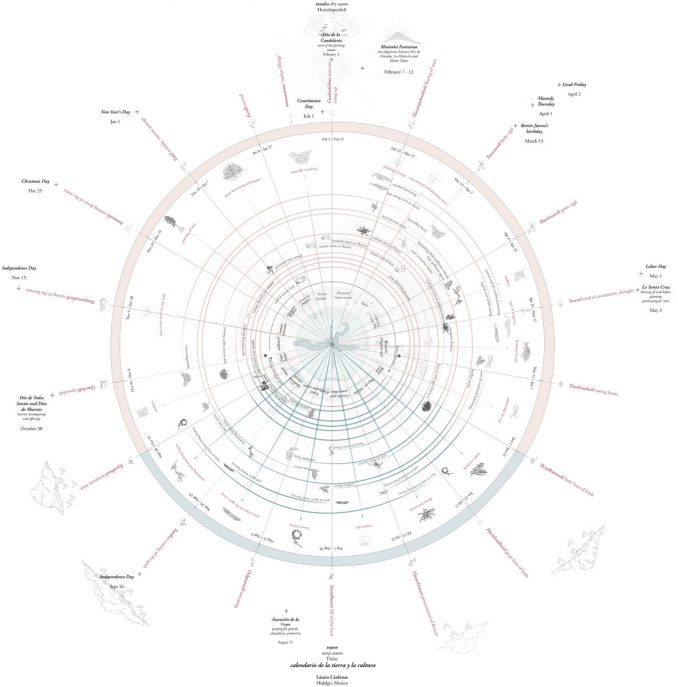
The proposed actions for agricultural production, care for the land, and cultural celebrations are compiled into a yearly calendar of earth and culture. The calendar reconnects the local cultural heritage of the Aztecs to the earth’s cycles, weather patterns, and the local economy, through a series of agricultural events administered by the proposed cooperatives. The calendar invites the public, locals and visitors, to celebrate the landscape’s ecological, cultural, and economic richness and diversity.
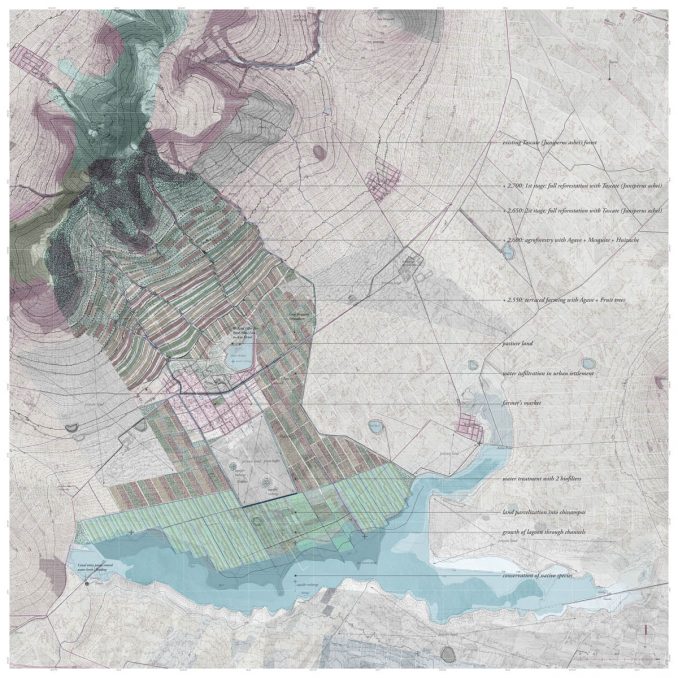
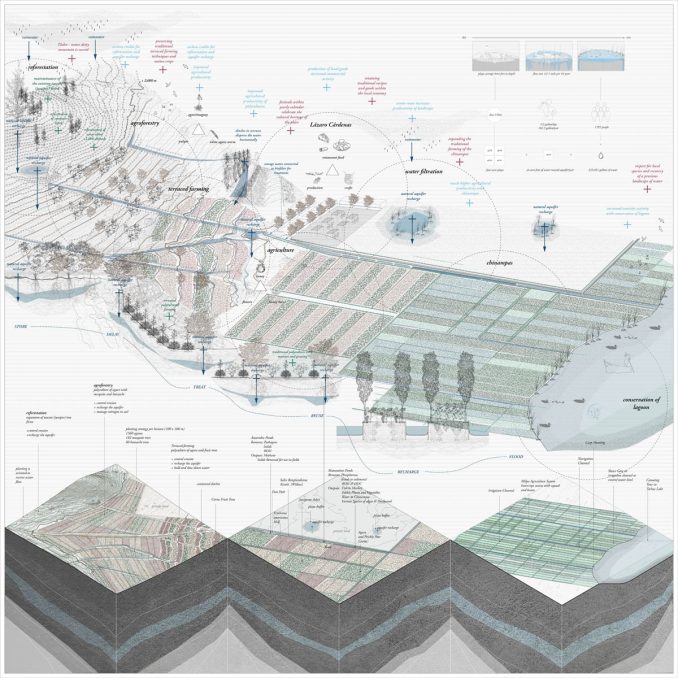
Student Project | Embracing Water: Engaging Cooperatives Toward More Productive Landscapes | Ying Dong & Lauren Duda & Maria Vollas
Project Name: Embracing Water: Engaging Cooperatives Toward More Productive Landscapes
Student: Ying Dong, Harvard University MLA 1 AP’22; Lauren Duda, Harvard University MLA 1 AP’22; Maria Vollas, Harvard University MDES (ULE) + MLA 1
Instructor: Lorena Bello Gomez
